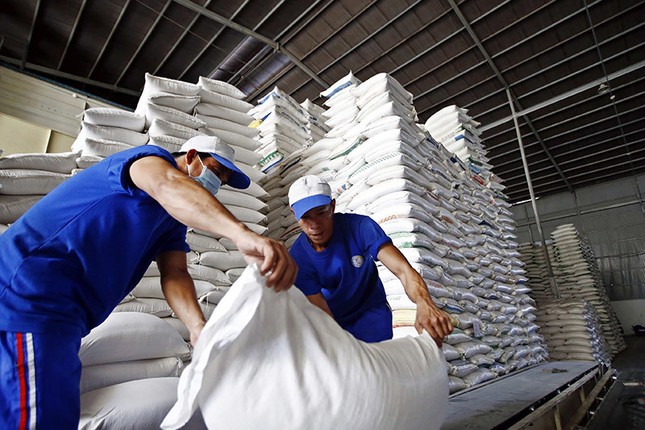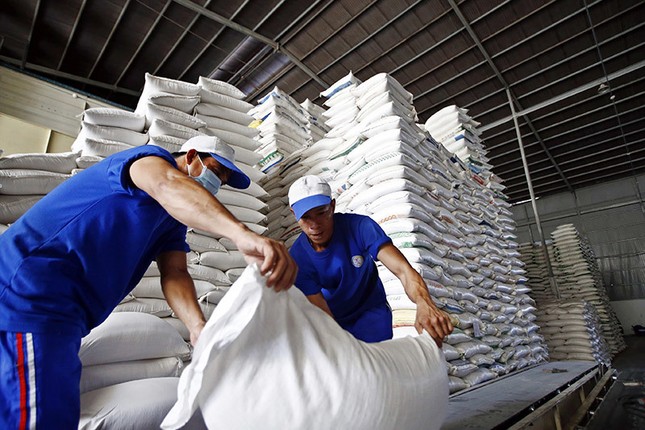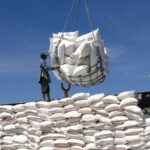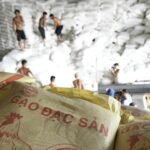The Ministry of Industry and Trade is seeking feedback on the draft circular amending and supplementing Circular 30/2018, which details several articles of the Government’s Decree No. 107 on rice export business.
One of the key changes in this draft is the adjustment of periodic reporting timelines. Accordingly, rice exporters will be required to submit reports on contract signing and execution before the 20th of every month, instead of the current scattered deadlines. In addition, rice exporters will have to report on rice and paddy stock levels by the 5th of each month, categorized by variety and grade (white rice, fragrant rice, sticky rice, etc.). This data will be sent simultaneously to the Ministry of Industry and Trade, the Department of Industry and Trade, and the Vietnam Food Association.
Businesses will also need to report stock levels through electronic software developed by the Ministry of Industry and Trade. During the transition period (from January 1, 2025, until the official operation of the software), businesses must continue to update data and can temporarily submit reports via email if the system malfunctions.

The Ministry of Industry and Trade proposes that rice export enterprises report on contract signing, execution, and rice stock levels monthly.
Speaking to Tien Phong newspaper, a leader of a southern rice export enterprise shared that requiring stock reports is necessary given the volatile rice market due to El Nino, trade wars, and exchange rate fluctuations.
This move will also help managing authorities grasp the market’s supply and demand dynamics, allowing for flexible policy adjustments. It will further prevent traders from hoarding rice to create artificial scarcity for profit, especially during periods of rising rice prices.
However, the source added that this would increase administrative burdens on businesses, particularly small enterprises.
“Enterprises have to report at two different times within a month with distinct content, which can be challenging if the software is not stable or lacks a support mechanism,” they said, suggesting that the Ministry of Industry and Trade conduct small-scale trials involving large and small enterprises before official implementation.
Mr. Nguyen Van Don, Director of Viet Hung Company, expressed concern about the challenge of consolidating stock data for enterprises with multiple warehouses in various provinces. He also worried that without a robust security mechanism, contract, price, and customer data could be leaked, putting enterprises at a disadvantage during negotiations or market competition.
“The Ministry of Industry and Trade should establish a clear roadmap for software implementation, including a minimum 3-6 month trial period with independent evaluations of its effectiveness, before mandating its use for all enterprises,” Mr. Don recommended. He also suggested temporary exemptions or reductions in electronic reporting obligations for small businesses or those facing technical difficulties in the initial phase, emphasizing the need for clear accountability in ensuring the confidentiality of enterprise operational information.
The Rice Bowl of Asia: Why Vietnam is the World’s Second Largest Rice Importer
For decades, Vietnam has been renowned as one of the world’s foremost rice producers and exporters. However, according to the latest projections from the United States Department of Agriculture (USDA), Vietnam may soon find itself in a drastically different position: that of the second-largest rice importer globally.
The Rising Price of Rice: Forecasting Record-Breaking Exports
The price of Vietnamese rice is surging once again, reclaiming its position as the most expensive in the world. Despite this, traditional partners have surprisingly announced their intention to import even larger volumes than initially anticipated, suggesting that rice exports could break records in both volume and value this year.
Rice Exports Continue to Face Challenges
The export market for rice continues to show signs of instability, remaining heavily dependent on a few key traditional markets such as the Philippines, China, and Indonesia.





















